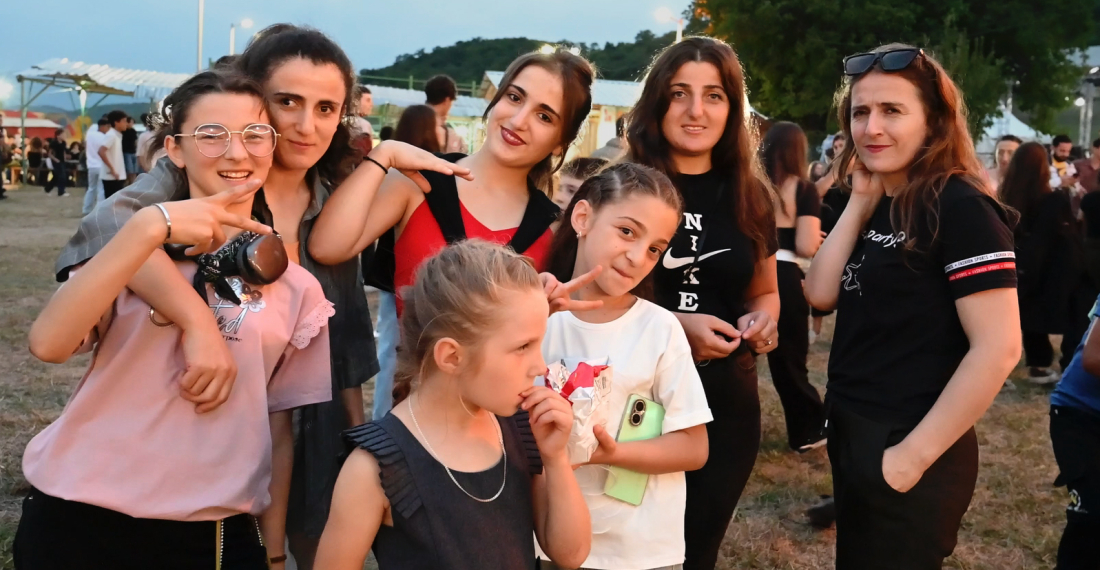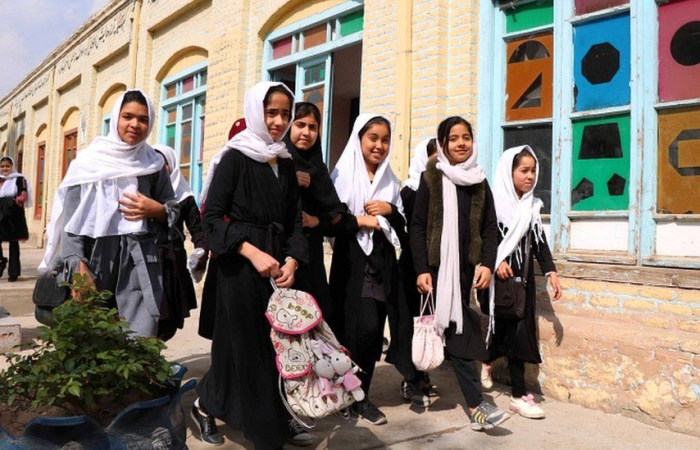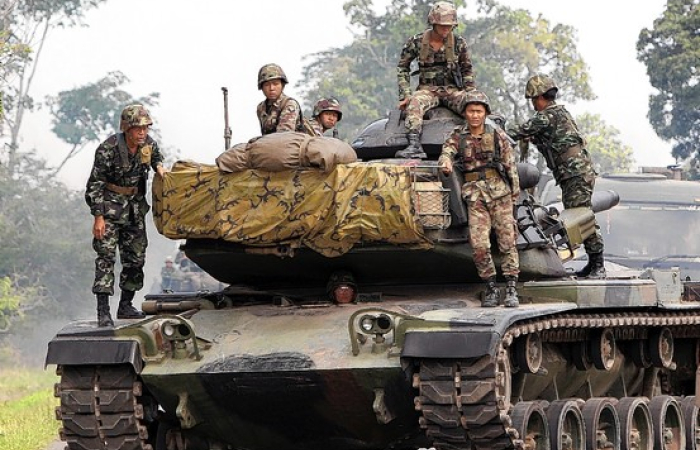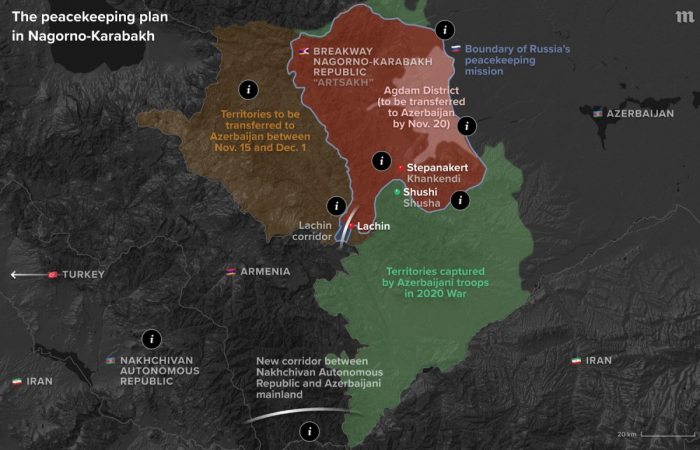In less than two months the Eurovision Song Contest will be held once more, this time in Switzerland. The competition, established by the European Broadcast Union in 1956, has many detractors but also many loyal fans. Intended to bring the countries of the European Broadcasting Area (EBA) together, the event is meant to be a celebration of cultural diversity and creativity. That hasn’t always been the case, however, especially when the acts are from the South Caucasus.
The region is a recent addition to the annual musical event. Armenia joined in 2006, Georgia in 2007, and Azerbaijan in 2008. Since then, there has almost always been some form of controversy. The most notable incident occurred in 2009 when Georgia withdrew from the competition after the EBU ruled that the title of its entry, "We Don’t Wanna Put In," was too political and offensive toward the Russian President.
The competition that year was to be held in Moscow, creating additional security concerns for the Georgian delegation if they participated. The previous year, Russia and Georgia fought a short five-day war over the breakaway region of South Ossetia. In 2012, Azerbaijan hosted the event. Musicians in Armenia successfully called for a boycott when a soldier was killed on the border with Azerbaijan months earlier.
Despite claims that the soldier had been shot by an Azerbaijani sniper, it soon turned out that he was instead killed by a fellow serviceman. Nonetheless, the boycott went ahead regardless. In general, however, Eurovision does at least mean that Armenian and Azerbaijani music is beamed into the homes of both populations if only for a moment. The potential of that should not be ignored.
In 2009, I remember hearing Azerbaijan’s entry that year being blasted from an apartment opposite during the summer months in Yerevan. Any spats surrounding the competition on what was then Twitter at the time were also mostly light-hearted and sometimes even conciliatory. In Tbilisi, a few Armenians and Azerbaijanis even gathered to watch Eurovision together.
But if it can still be difficult for many adults to treat the competition as intended, the situation is more positive when it comes to Junior Eurovision. Even in 2021, one year after the 2020 war, video spread on YouTube of Azerbaijan’s Sona Azizova and Armenia’s Maléna meeting each other backstage. Wide-eyed and smiling, both hugged each other. Twelve-year-old Sona said her song was about “love, happiness, hope, and friendship.”
It reminded me of 1994 when I visited captured Azerbaijani soldiers held prisoner in Karabakh only to find a group of ethnic Armenian and Azerbaijani children playing together in the same guarded location. Those Azerbaijani children, incidentally, were civilian hostages held in the same secure wing of the local maternity hospital as the POWs while the Karabakh Armenians were permitted to visit to play with them. Maybe children see less differences.
Musical events involving Armenia and Azerbaijan are of course common in Georgia but few are staged to professional standards or able to reach a significant audience. Many such events are usually low-impact NGO-driven grassroots affairs. Nonetheless, the potential is there if promoted and developed sufficiently. The music industry in Armenia, for example, is particularly well developed and videos on YouTube can attract millions of views.
And as the platform is international it can also reach well outside the immediate region or diaspora communities. Even the music industry for children in Armenia is impressive. Colourful, catchy, and slickly produced, videos also attract tens of millions of YouTube views per song even. Most also don''t appear to focus on military themes as before, instead imparting positive energy into the lives of children.
One video, for example, lightheartedly deals with overcoming the cultural differences between a child raised in the city and her elderly grandmother living in a village. Another touches upon the love of Indian soap operas and Bollywood films that can be found in Armenia. Cultural diplomacy at its finest that was also noticed by Indian YouTubers.
Indeed, the other day a friend sent me video of her niece watching Armenian children's music videos from afar in Azerbaijan. YouTube can prove quite serendipitous and its algorithms offer more of the same when they do kick in. The image of an Azerbaijani child relating to a song by an Armenian kid the same age preparing for their first day at school should not be underestimated. The music, sometimes encompassing shared regional melodies, is also similar.
Unfortunately, the music industry for young people in Azerbaijan is not as developed as it is in Armenia. In fact, the Turkish music scene takes up much of the available space for that age group. However, there’s hope that one day, Armenian children may also come to enjoy videos from Azerbaijan. Building non-politicised people-to-people connections is crucial in the context of the Armenia-Azerbaijan conflict, and this could begin where it’s needed most – among children and youth.
Such an idea is not simplistic. In Pakistan, for example, the cartoon, Burkha Avenger, created by pop singer Haroon, promotes education, health, equality, and tolerance, coincidentally countering the allure of violent extremist groups. It has won numerous prizes worldwide. In the United Kingdom, soap operas can include themes such as bullying, HIV-AIDS, and the danger of marginalisation and radicalisation.
Though such a reality will have to emerge organically and meet commercial standards, the potential is there. Until then, there is at least some very impressive material and extremely talented children on YouTube to change perceptions. Children, after all, are often more curious, open to cultural exchanges, and largely immune to the types of propaganda that their elders are more susceptible to.
Source: Onnik James Krikorian is a journalist, photojournalist, and consultant from the U.K. who has covered the Armenia-Azerbaijan conflict since 1994.
Photo: A family at the One Caucasus festival held in the mainly ethnic-Azerbaijani municipality in Georgia. The annual event features musical acts from Armenia, Azerbaijan, Georgia, and beyond who perform for a mainly local ethnic Armenian, Azerbaijani, and Georgian audience, including families © Onnik James Krikorian 2024
The views expressed in opinion pieces and commentaries do not necessarily reflect the position of commonspace.eu or its partners.






